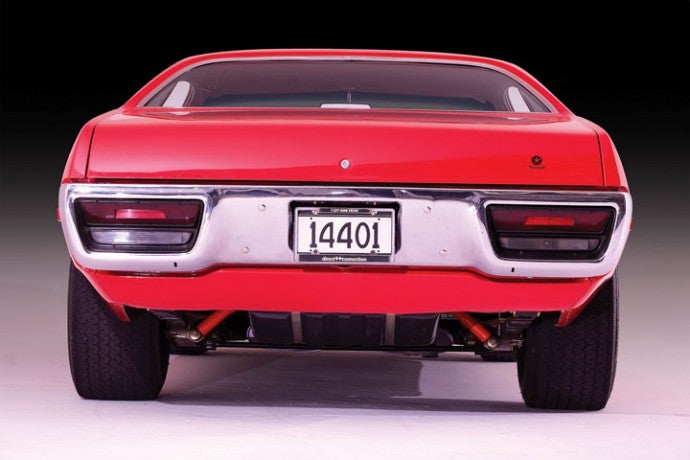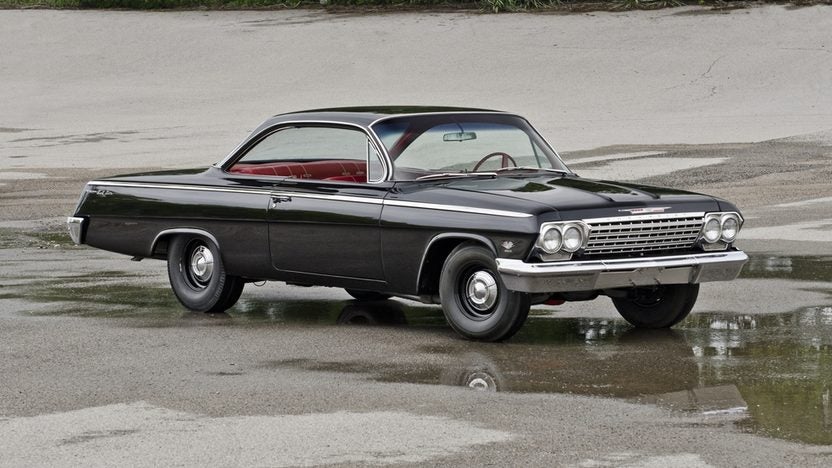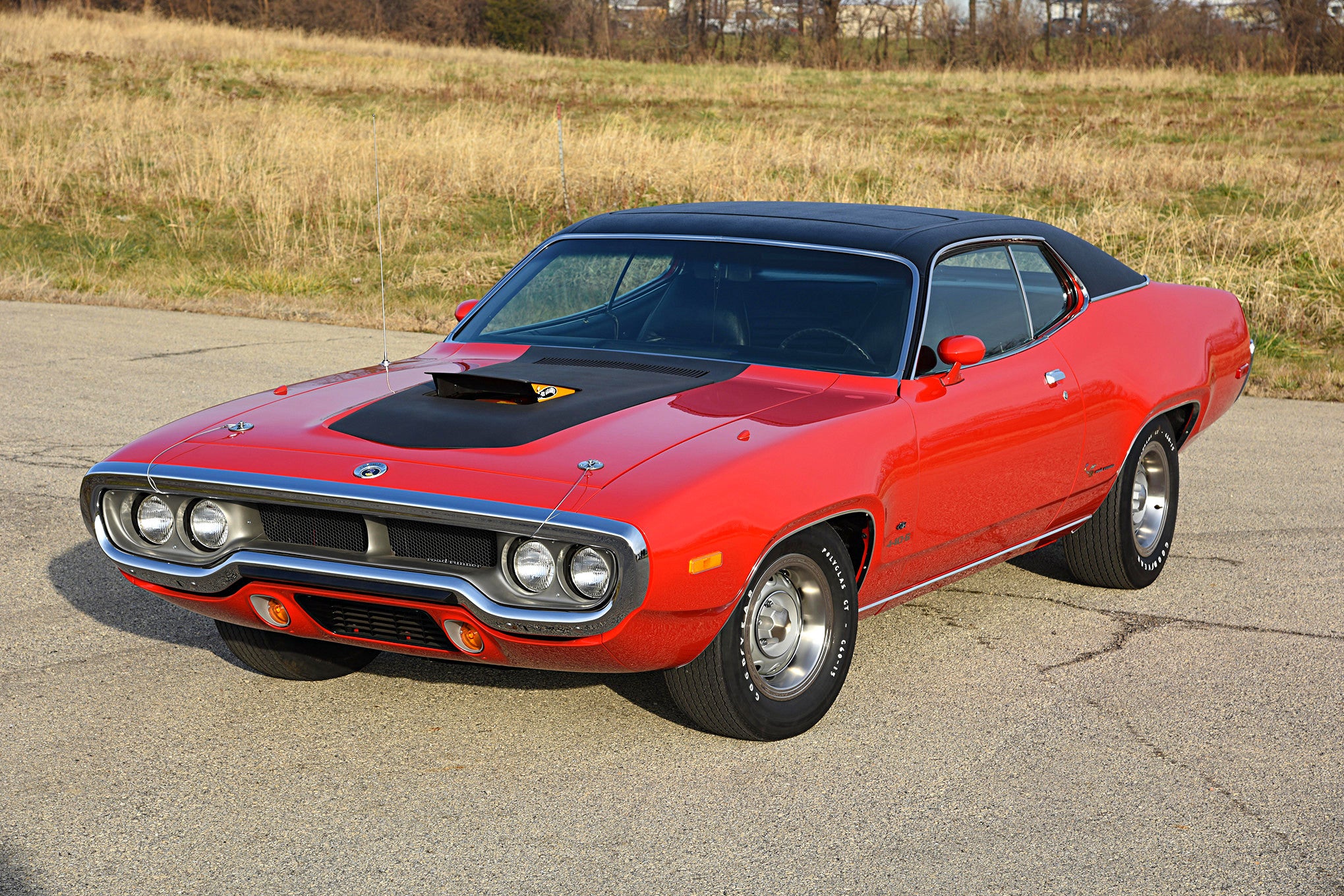 by "djmt1" (djmt1)
by "djmt1" (djmt1)
Published 03/20/2017 at 15:51
 by "djmt1" (djmt1)
by "djmt1" (djmt1)
Published 03/20/2017 at 15:51
No Tags
STARS: 1
What’s the difference between the 1970 Plymouth Roadrunner and Satellite? I mean, I’m convinced they’re the same car but they have separate Wikipedia entries and I can’t argue against that kind of evidence.

 "The Crazy Kanuck; RIP Oppositelock" (jukesjukesjukes)
"The Crazy Kanuck; RIP Oppositelock" (jukesjukesjukes)
03/20/2017 at 15:57, STARS: 4
The Roadrunner was the performance version, the Satellite was not.
 "jimz" (jimz)
"jimz" (jimz)
03/20/2017 at 15:57, STARS: 4
Belvedere, Satellite, Road Runner, and GTX were all the same car. The different nameplates were for various trim levels and body styles. Belvedere and Satellite could be had as 4-door sedans, Road Runner and GTX could not.
the ‘60s were when the car companies really started expanding their model lineups. in the ‘50s, they typically had one basic car model with different name plates, and one pickup truck. For example, everyone knows the ‘57 Chevy Bel Air. But there was a range of models of that car, the 150 was the base, with the 210 above it. At the top was the Bel Air. The Nomad and Sedan Delivery were 2-door wagon versions of the Bel Air/210/150, while the Townsman and Beauville were the 4-door wagon versions. All the same basic car.
think about that. that was Chevy’s lineup in ‘57. One car with multiple body styles, the Corvette, and the Task Force pickup.
 "Otto-the-Croatian-'Whoops my Volvo is a sedan'" (otto-the-croatian)
"Otto-the-Croatian-'Whoops my Volvo is a sedan'" (otto-the-croatian)
03/20/2017 at 15:57, STARS: 1
Thank you for asking that! It’s been driving me nuts for some years now.
Googling it only made me more confused about this. This thing looks badass but I can never find the model I’m looking for.


 "crowmolly" (crowmolly)
"crowmolly" (crowmolly)
03/20/2017 at 15:57, STARS: 3
If I remember correctly, the Road Runner is the high performance version of the Satellite. Like a Lemans/GTO.
 "BvdV - The Dutch Engineer" (dutchengineer)
"BvdV - The Dutch Engineer" (dutchengineer)
03/20/2017 at 16:00, STARS: 1
(not a yank): I think they share a body. Per wikipedia :
The 1968 model year was also the introduction of the Plymouth Road Runner that shared the same body as the Satellite and Belvedere models.
This should also hold for the 1970 as wikipedia states 1968-1970 was one generation.
 "Breakfast Burrito: The True Resident Burrito" (breakfast-burrito)
"Breakfast Burrito: The True Resident Burrito" (breakfast-burrito)
03/20/2017 at 16:04, STARS: 2
Satellite was a performance/luxury trim for the Plymouth Belvedere. Originally it was the top level, but became mid-level with the introduction of the GTX trim.
The Road Runner was also a trim of the Belvedere in 1968, but was a “striped-down/go-fast” kind of trim. Plymouth made a big deal about how muscle cars were losing their affordable, “one-track-mind” origins, so the Road Runner was basically a base Belvedere with either a 426 or 440 engine.
 "If only EssExTee could be so grossly incandescent" (essextee)
"If only EssExTee could be so grossly incandescent" (essextee)
03/20/2017 at 16:13, STARS: 1
The name, primarily.
 "WilliamsSW" (williamssw)
"WilliamsSW" (williamssw)
03/20/2017 at 16:18, STARS: 2
Nitpicky, but the Roadrunner was like a performance version of the lower end Belvidere while the GTX was a performance version of the Satellite.
The GTX was more luxurious and came with a 440 standard. The Roadrunner was intended to be a lower priced performance car, and was available with a 383 to start. The Belvidere and Satellite could be had with smaller engines, including a six, I think.
JimZ nailed it, all 4 were the same basic body.
 "WilliamsSW" (williamssw)
"WilliamsSW" (williamssw)
03/20/2017 at 16:28, STARS: 0
Yup. In, say, 1962, the hot setup from Chevy wasn’t an Impala SS hardtop with the 409. It would have been a Belair hardtop, or better yet, a Biscayne sedan with the 409.
That type of setup was disappearing by the late 60s, and was never really available in the mid sized cars. The Roadrunner / Super Bee tried to go back to those roots.
 "adamftw" (adamftw)
"adamftw" (adamftw)
03/20/2017 at 16:43, STARS: 0
‘62 Bisquick 409... Mmmmmm
 "WilliamsSW" (williamssw)
"WilliamsSW" (williamssw)
03/20/2017 at 16:50, STARS: 1

This is the one that I love. I wish the 62 Impala had kept this body style.
 "SoSlo-2" (soslo-2)
"SoSlo-2" (soslo-2)
03/20/2017 at 17:40, STARS: 0
You’re theory is correct but some facts are not. Although these 4 B-bodies are essentially the same ‘car’, the GTX was built as the performance car off of the higher trim Satellite while the Roadrunner was the low buck - go fast trim built off of the standard Belvedere.
‘72 Plymouth Satellite, only year of that taillight design. The GTX and Roadrunner have split grills as shown: Hell yes. Such a bad ass car. Back in the good old days, manufacturers would essentially build one standard car and sell it under different model names. Although consumers at the time thought of them as separate and distinct models, by today’s standards, they seem more like trim levels variations of the same basic car. By the 1960s, the situation had changed a bit, companies typically had totally different cars in at least three size classes, plus a few distinct specialty models, but the practice of spinning a few separate nameplates off the same basic design continued. The Satellite was Plymouth’s standard medium sized car, and the performance derivative was sold as the Road Runner. It was badged and marketed as a separate model, but was the same basic car. It would be like if Fiat Chrysler had decided to market the current Dodge Challenger SRT Hellcat as a separate model and drop “Challenger” from the name. I use that example only because Fiat Chrysler no longer produces any midsize cars.
Unless optioned otherwise, the Roadrunner came with a 383 topped with a 4-barrel and had the heads, intake, exhaust manifolds and cam out of the 440 Super Commando to bump it to 335 hp. The Hemi was an option but the 440 with a 4-barrel was never actually available from the factory on this body style. They did offer the 440 with the 6-barrel as an option in ‘70 but those are rare birds....  "daender" (daender)
"daender" (daender)
03/20/2017 at 19:32, STARS: 0
 "adamftw" (adamftw)
"adamftw" (adamftw)
03/20/2017 at 20:04, STARS: 1 "ranwhenparked" (ranwhenparked)
"ranwhenparked" (ranwhenparked)
03/20/2017 at 20:44, STARS: 1